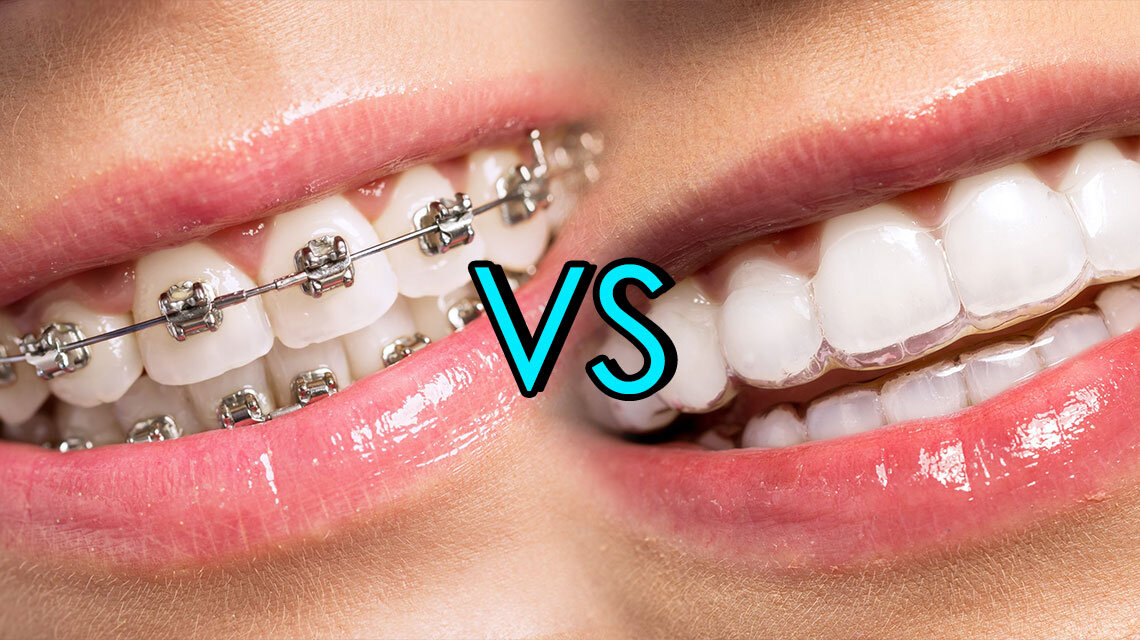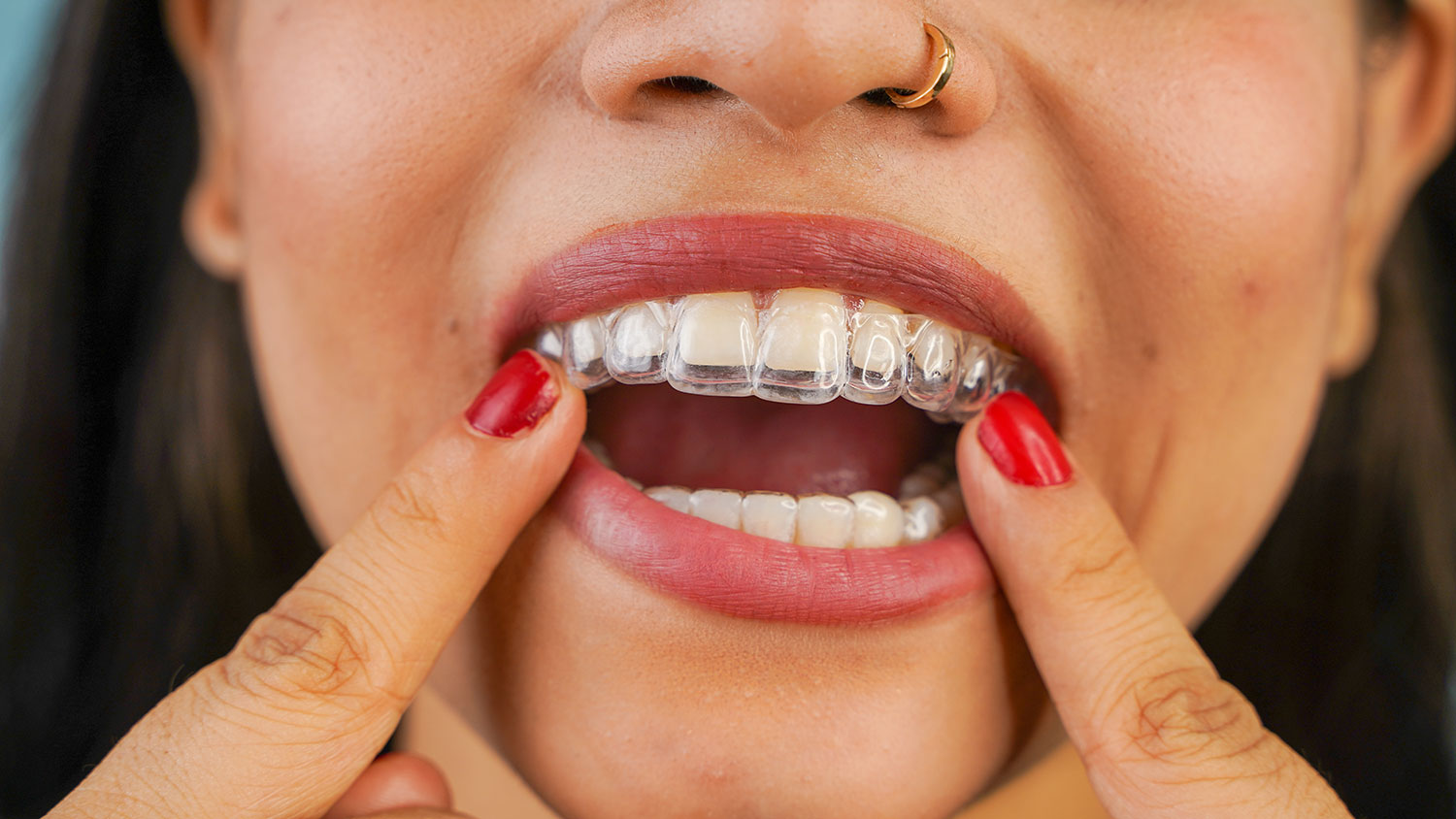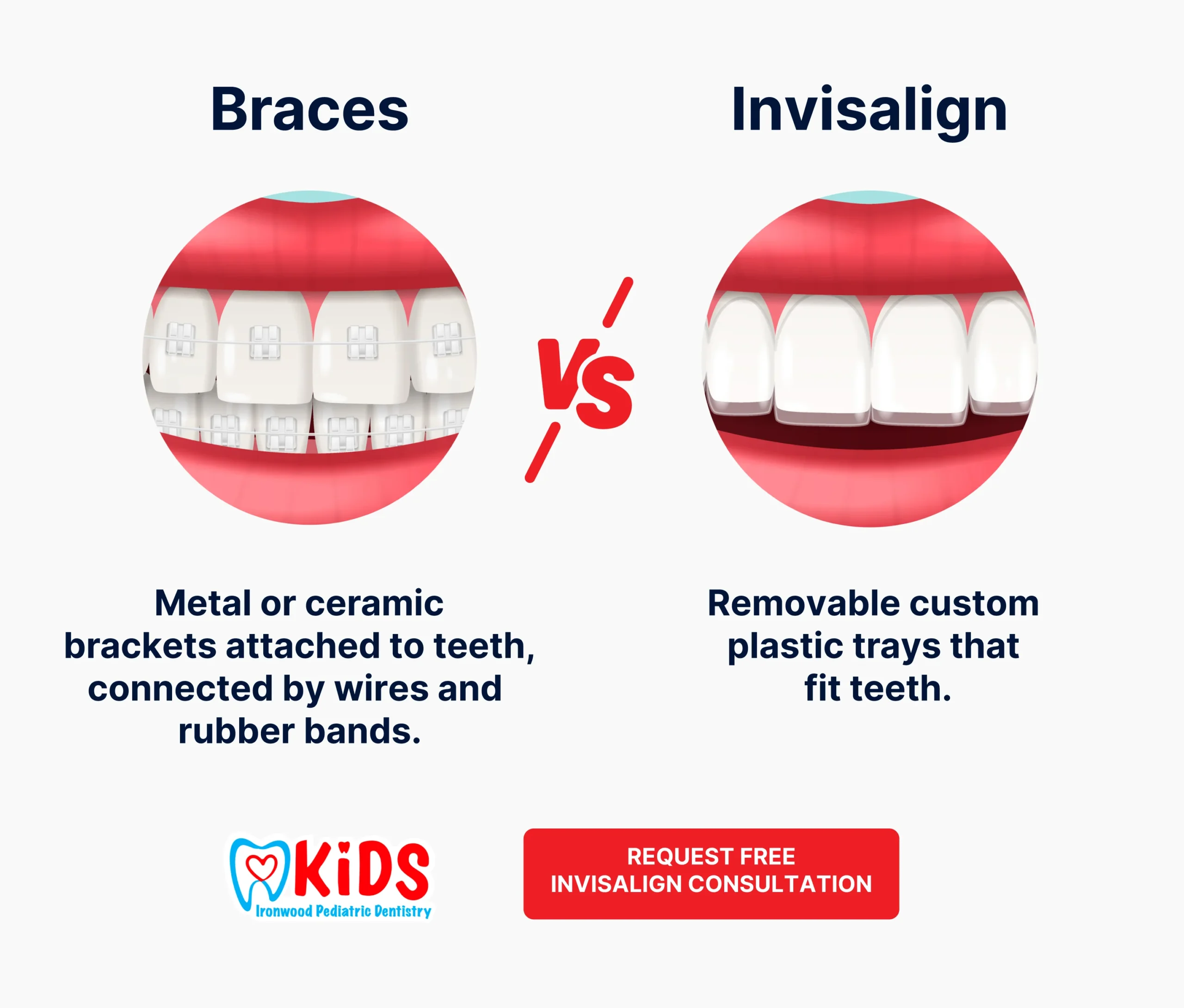Maintaining Oral Health While Utilizing Invisalign: Tips for a Smooth Experience
Maintaining Oral Health While Utilizing Invisalign: Tips for a Smooth Experience
Blog Article
Invisalign vs. Traditional Dental braces: Which Option Is Right for You?
When thinking about orthodontic treatment, the option in between Invisalign and conventional dental braces provides several important factors that merit cautious examination. Invisalign provides a discreet option with removable aligners, while standard dental braces supply an extra noticeable yet efficient remedy for extreme imbalance.
Introduction of Therapy Choices

In comparison, conventional braces consist of metal braces and cords that are bound to the teeth. This approach uses continual stress in time to accomplish positioning. While effective for intricate orthodontic issues, conventional braces need regular sees for adjustments and can pose obstacles in preserving dental hygiene because of the problem of cleaning about braces and cables.
Both choices have their benefits, and the option typically depends upon certain dental problems, lifestyle choices, and individual compliance. Inevitably, consulting an orthodontic professional is critical for determining the most suitable therapy plan customized to specific requirements. Comprehending the nuances of each choice can significantly influence the overall success of orthodontic therapy.
Visual Considerations
A considerable variable influencing the choice in between Invisalign and typical dental braces is the visual charm each treatment offers. Invisalign aligners are crafted from clear plastic, making them essentially undetectable when put on.
In comparison, traditional braces consist of steel braces and cords, which can be a lot more visible. While advancements in orthodontic innovation have actually resulted in the growth of smaller brackets and colored elastics, standard dental braces still keep an even more noticeable profile. For some individuals, the exposure of dental braces may prevent them from seeking needed therapy.
Ultimately, the selection between Invisalign and standard braces may depend upon individual preferences relating to visual appeals. Clients who prioritize discretion frequently favor Invisalign, while those that are less worried concerning presence might go with traditional dental braces. Recognizing the visual effects of each option is essential for making an educated decision that lines up with one's way of life and preferences.
Comfort and Convenience

In terms of benefit, Invisalign aligners are removable, making it possible for individuals to appreciate their preferred foods without restriction and keep optimum oral hygiene. helpful hints Brushing and flossing are simplified, as the aligners can be gotten throughout these routines, whereas standard braces call for cautious maneuvering around cords and braces.
In contrast, standard dental braces demand normal changes, making them much less practical for those with hectic timetables. Overall, the comfort and ease of Invisalign make it an attractive choice for several individuals seeking orthodontic therapy.
Therapy Duration and Effectiveness
While both Invisalign and conventional braces work in remedying dental imbalances, the period of therapy can differ substantially between the two alternatives. Typically, Invisalign treatment can take anywhere from 12 to 18 months, depending upon the intricacy of the case. The clear aligners work by progressively shifting teeth into their preferred placements, and regular follow-ups with an orthodontist help ensure progress stays on the right track.
On the other hand, typical braces commonly require a longer dedication, generally varying from 18 months to three years. This is because of their set you can look here nature and the usage of cords and braces, which can be a lot more effective for complex instances and serious imbalances (Invisalign). The treatment efficiency of standard dental braces is well-documented, as they permit exact adjustments and higher control over tooth motion
Ultimately, the selection between Invisalign and traditional dental braces may hinge on both the awaited therapy period and the particular oral concerns at hand. Consulting with an orthodontist is essential, as they can supply tailored referrals based upon private requirements, making certain the chosen method straightens with desired outcomes and timeframes.
Expense Comparison and Insurance Coverage Choices
Cost plays a considerable function in the decision-making procedure for individuals taking into consideration orthodontic therapy, whether deciding for Invisalign or typical dental braces. Usually, the price of Invisalign arrays from $3,000 to $8,000, while standard dental braces commonly set you back between $2,000 and $6,000. Variables influencing these costs consist of the intricacy of the instance, the period of therapy, and geographical location.
Insurance policy protection can dramatically impact out-of-pocket expenditures. Many dental insurance plans give partial insurance coverage for orthodontic therapies, yet the specifics can vary Full Report commonly. It is essential for individuals to examine their insurance coverage to identify the extent of insurance coverage for either option. Typically, standard dental braces may be much more often covered by insurance coverage strategies compared to Invisalign, which some insurers classify as a cosmetic treatment.
Furthermore, numerous orthodontic techniques use flexible settlement plans, making both therapy alternatives more easily accessible. Patients need to make inquiries regarding prospective financing choices and discount rates for ahead of time repayments. Assessing the total expense, consisting of insurance benefits and layaway plan, is crucial for making a notified choice that straightens with both aesthetic choices and budget factors to consider.

Verdict
In summary, the option between Invisalign and standard braces rests on multiple factors, including visual preferences, comfort, treatment duration, and price. Invisalign uses a discreet, removable choice that helps with dental hygiene and dietary adaptability, while conventional braces might be better for complex oral problems and often come with a lower price factor. Inevitably, examination with an orthodontist is necessary to examine private circumstances and identify the most appropriate treatment option for attaining ideal dental positioning.
When considering orthodontic treatment, the selection between Invisalign and standard dental braces presents numerous vital variables that merit cautious analysis.Comparing Invisalign and traditional dental braces exposes distinctive treatment options for orthodontic adjustment.While both Invisalign and standard braces are effective in correcting dental misalignments, the period of therapy can vary considerably in between the two choices.Price plays a significant duty in the decision-making process for people thinking about orthodontic therapy, whether deciding for Invisalign or traditional braces.In recap, the choice between Invisalign and conventional braces pivots on several aspects, including visual choices, comfort, treatment period, and cost.
Report this page